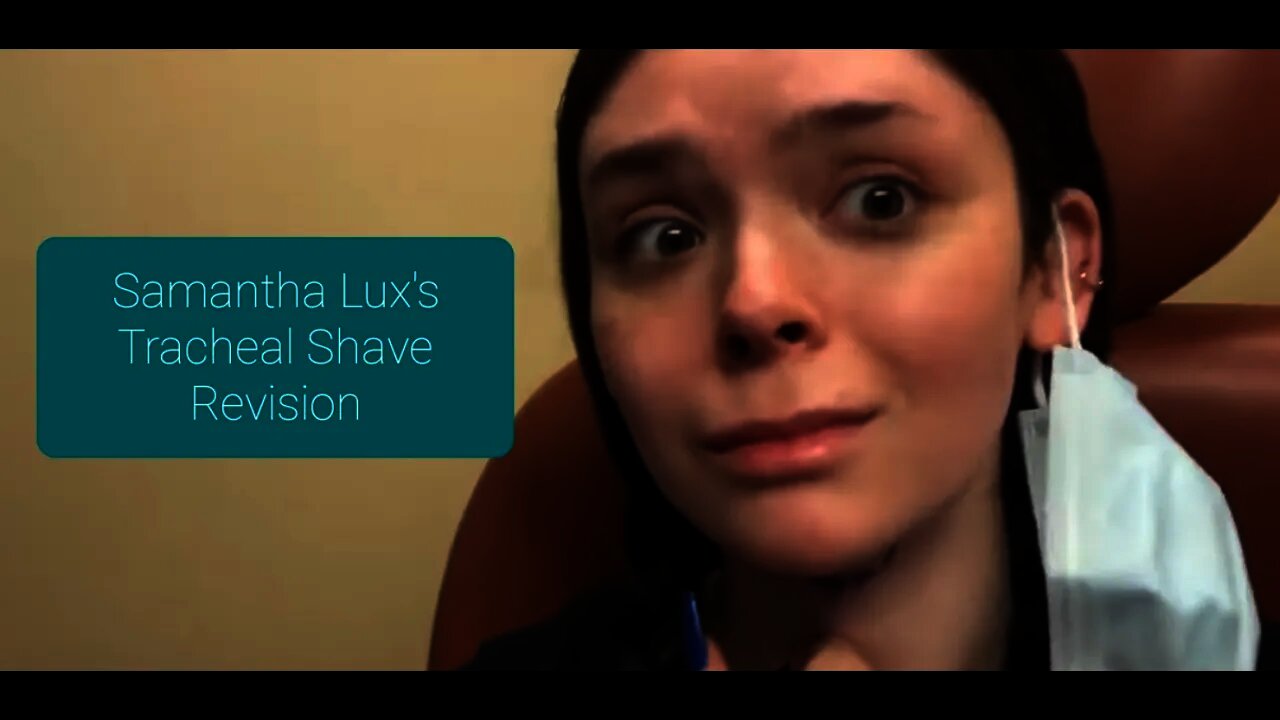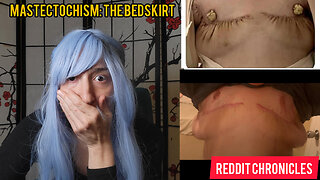Premium Only Content

Cartilage Blanche
Samantha, this is viral marketing. This hypothetical model could help someone - perhaps you. It will likely significantly financially benefit me if you blow this up. So if you are unhappy with this video, you may prefer not to even acknowledge it.
(Superiority Complex Part 2)
Patreon.com/Exulansic
Paypal.me/Exulansic
exulansic.sellfy.store
Chondrotracheoplasty, aka, chondrolaryngoplasty, or as is known colloquially, "tracheal shave," is a cosmetic surgery procedure in which a person has had carved off parts of the tracheal cartilages (especially thyroid cartilage or "Adam's apple") to reduce the masculinized look of the front of the neck, in an attempt to create a more feminine appearance by masking the true size of the larynx and trachea. Because it is impossible to physically shrink the larynx once it has reached its mature adult size, shape, and tensility, the cartilage must instead be thinned. This creates risk to surrounding tissues, including very small nerves that run along the outside of the cartilage being "shaved."
The larynx is an complex, intricate, nickel-sized structure (in an average adult male, versus dime-sized female) that is full of blood vessels, nerve endings, small, mobile cartilages, muscles, and other connective tissue. It is one which is highly specialized for extremely fine, rapid, regular movements, including dynamic stabilizing activation patterns. The function of the larynx is critically important to the biological function of swallowing, which is performed 500-700 times per day. A small adhesion quickly snowballs.
In this episode, transgender youtuber Samantha Lux describes post-tracheal shave complications, including suspected tracheodermal skin adhesion, and I speculate on causes, including damage during the surgery or as a result of the scar tissue, to the external superior laryngeal branch of the vagus nerve, and offer informed speculation and terminology to help contextualize the symptom pattern described, as it would apply to a HYPOTHETICAL patient. This is PART 2 where I examine her video documenting the efficacy of the second surgery that was intended to free the adhesion and restore mobility to Samantha's larynx.
Samantha Lux is not my patient and we have no clinician-client relationship and never have. Where I appear to be addressing Samantha directly, I am in fact rhetorically addressing a hypothetical male patient named Sam. I am not in a position to formally diagnose Samantha, though I am qualified to diagnose these disorders generally, at the time of publication. None of this is Samantha's additional personal, private information - just speculation and extrapolation based on Samantha's self-published information (fair use exception to copyright). I also offer suggestions and advice for which type of follow up care would be most appropriate for a hypothetical patient presenting with an identical history and sign/symptom pattern.
-
 6:16
6:16
TT Exulansic
1 month agoMastectochism: The Bedskirt
2.41K6 -
 22:21
22:21
Russell Brand
23 hours agoVaccines Don't Cause Autism*
79.6K440 -
 LIVE
LIVE
The Dilley Show
1 hour agoNew Years Agenda, New Orleans Terror Attack and More! w/Author Brenden Dilley 01/01/2025
3,553 watching -
 25:45
25:45
Outdoor Boys
2 days ago3 Days in Arctic Survival Shelter - Solo Bushcraft Camping & Blacksmithing
11.3K7 -
 2:59:05
2:59:05
Wendy Bell Radio
7 hours agoAmerica Is Back
64.2K88 -
 1:45:57
1:45:57
Tucker Carlson
4 days agoAaron Siri: Everything You Should Know About the Polio Vaccine, & Its Link to the Abortion Industry
98.1K134 -
 1:46:38
1:46:38
Real Coffee With Scott Adams
3 hours agoEpisode 2707 CWSA 01/01/25
18.5K10 -
 14:06
14:06
Stephen Gardner
2 hours ago🔥Trump FIGHTS BACK: Biden White House BUSTED in MAJOR SCANDAL!
14.6K94 -
 6:08:13
6:08:13
MissesMaam
15 hours agoCelebrating New Years 2025 💚✨
69.1K16 -
 3:22:32
3:22:32
PandaSub2000
3 days agoPlatformer ExtravaPandza | ULTRA BEST AT GAMES (Original Live Version)
113K33